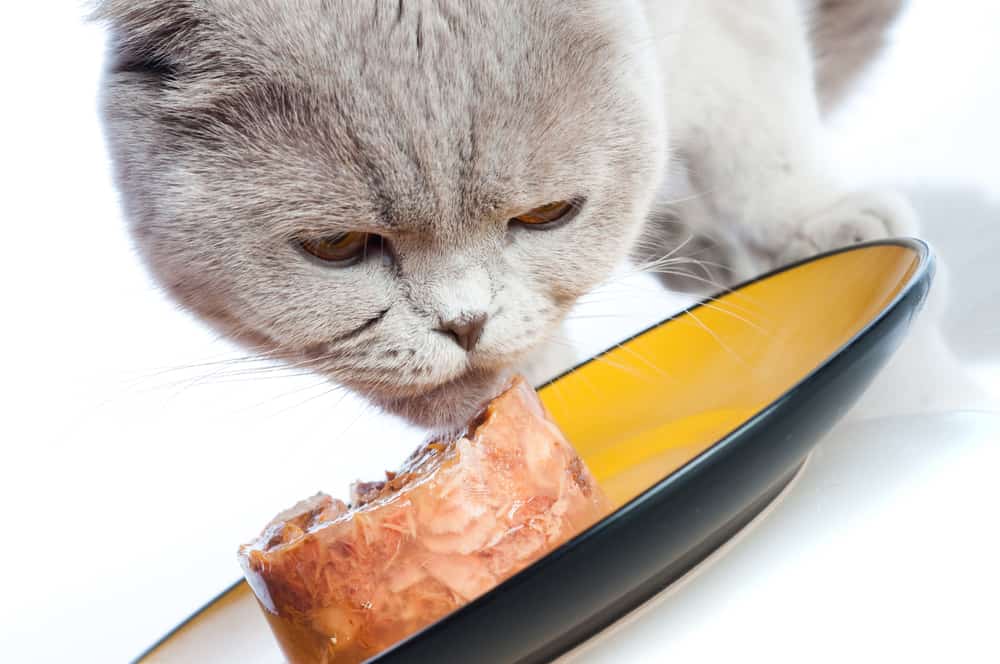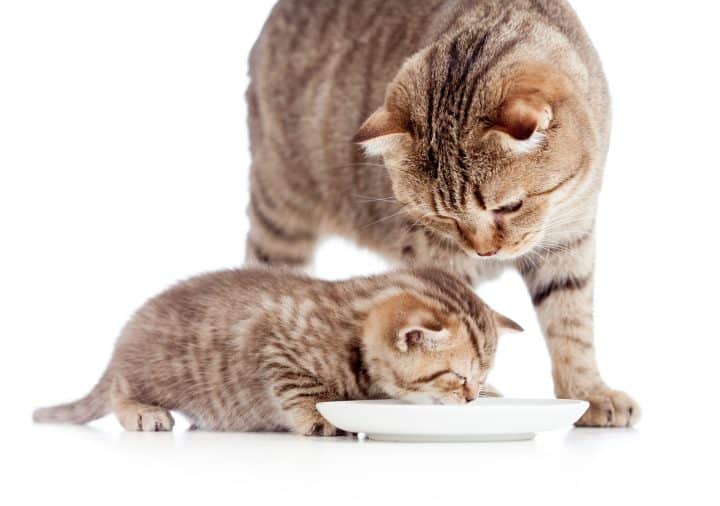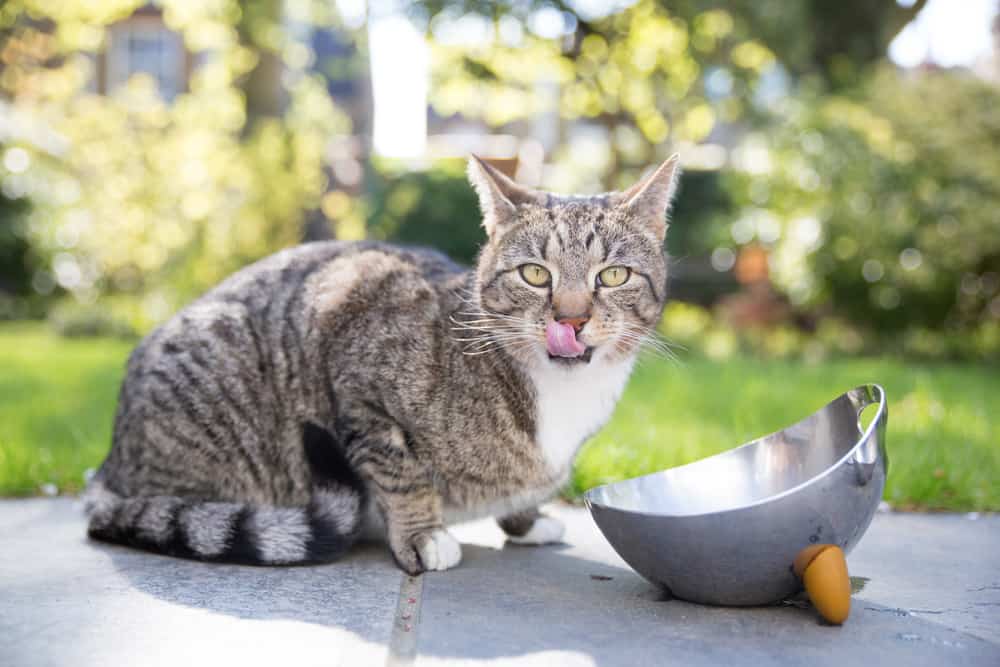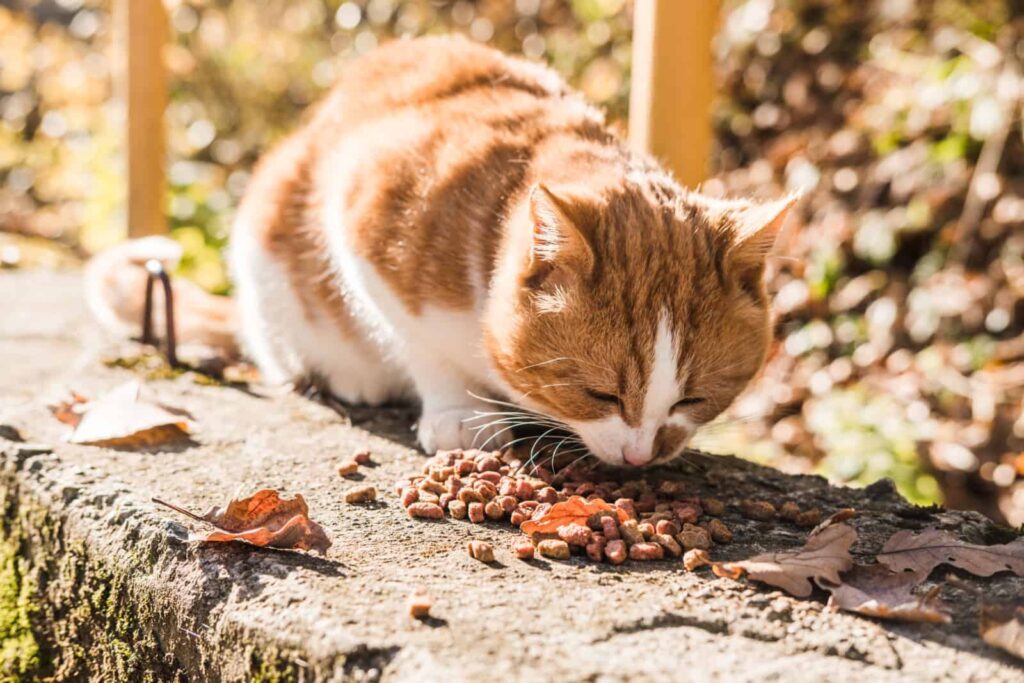last updated May 2021
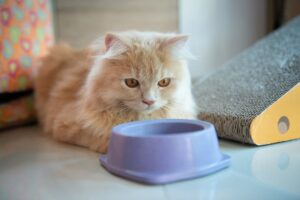
Our cats can be finicky about their diets, and we can be just as discerning when it comes to filling their dishes. With unfamiliar ingredients listed on cat food labels, it can be challenging to make educated choices.
Here, we unlock the mystery of guar gum to help you decide if this ingredient has a place at your cat's mealtime.
Guar gum, derived from the cluster bean, is a natural stabilizer and thickener in canned cat food. Considered safe, guar gum has also been used as a laxative in cats. Some older cats may experience reduced protein absorption, diarrhea, and gas due to guar gum in wet cat food.
What is Guar Gum?
A water soluble gum derived from the endosperm of the cluster (guar) bean, Cyamopsis tetragonoloba, guar gum is a food additive used in many human and canned pet foods for its thickening and stabilizing properties. Guar gum is also used in pharmaceuticals, cosmetics, and industrial applications. It is considered safe by the U.S. Food and Drug Administration and other regulatory bodies worldwide.
Chemically, guar gum is comprised of mainly galactose and mannose, together called galactomannan. There are also small amounts of protein, soluble fiber, ash and moisture. It becomes highly viscous in water, making it an excellent thickening agent. It is commonly used in ice cream, frozen foods, beverages, baked goods, sauces, and other dairy products.
Where Does it Come From?
The cluster bean has been cultivated in India and Pakistan for hundreds of years as food for humans, horses and cattle, and in the United States since the mid-twentieth century when it was studied for its value in paper production. The vast majority of guar is still produced in India and Pakistan, but many other countries also grow it. There is a large grower and processor of guar gum in Texas, where USDA organic certified guar gum powder originates.
Guar Gum in Cat Food
Guar gum stabilizes ingredients in wet cat food to ensure even distribution of meats and vegetables, and to eliminate the need for owners to stir canned food. This indigestible soluble fiber imparts high viscosity and moisture retention to cat food.
Guar gum is considered safe when consumed in commercial cat food at acceptable levels, and soluble fiber may promote soft stool and bowel regularity.
There is one possible caveat: in one study the addition of 0.4% guar gum to wet commercial cat food decreased digestibility of protein and led to wetter stool in older cats. If your older cat is experiencing diarrhea, gas, increased appetite or weight loss, a veterinarian may recommend eliminating guar gum if all other common causes have been ruled out.
See Also: My Cat Has Diarrhea But Seems Fine – What To Do?
Benefits in People
Some people with irritable bowel syndrome experience relief of both diarrhea and constipation with guar gum. It is a primary ingredient in some laxatives. Additional benefits include lowering blood glucose and cholesterol, reducing blood pressure, enhancing mineral absorption, and reducing calorie consumption. These benefits have not been studied in cats.
The Bottom Line
Guar gum is a natural and generally safe food additive in canned cat foods. It helps wet cat food maintain a uniform consistency and adds soluble fiber. If your cat is prone to constipation, guar gum in cat food may soften stool. Cats with diarrhea, weight loss, and bloating may benefit from the elimination of dietary guar gum, but a veterinarian can help rule out more common causes.


